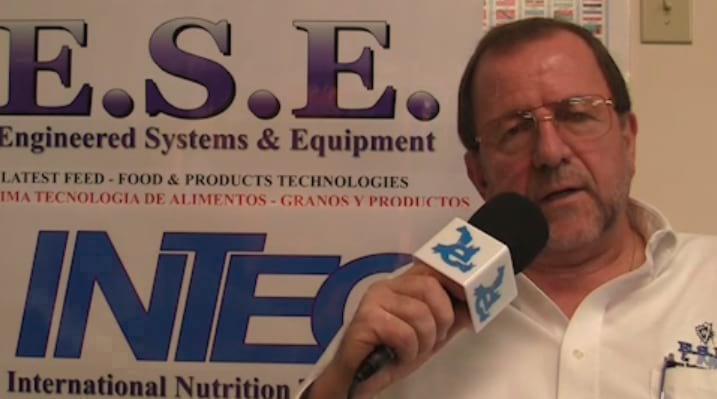Check out what is new in Animal Feed
Find the best technical articles, forums, and videos on Animal Feed at Engormix. Enter now and interact with the world's largest agricultural social network.
.jpg&w=3840&q=75)
Explore the world of mycotoxin detection with Colin Lee, VICAM Canada Sales Representative, as he sheds light on the innovative use of immunoaffinity columns...
Comments : 0
Recommendations: 0
Short Answer: Rendering is Recycling It’s a process that repurposes co-products(also called by-products) that would otherwise go to waste from the “meat we don’t eat.” By rendering specific materials that many North American consumers would consider inedible, such as certain fats, bones and proteins, renderers provide...
Comments : 0
Recommendations: 1
Rendering involves repurposing animal co-products that would otherwise be discarded. It converts the parts of a meat animal we choose not to eat into stable, usable materials such as fuel, pet food, and livestock feed, creating a highly sustainable alternative. Below, learn more about products made from rendered materials in detail. You can discover...
Comments : 0
Recommendations: 1
Dietary alfalfa may improve broiler growth, but fiber inclusion may be detrimental during coccidiosis challenge.
Alfalfa is a source of health-promoting bioactive compounds (phytochemicals) that may offer several benefits to the poultry industry by direct action or by influencing the microbial communities in chickens.
Iowa State University researchers recently examined the role late-cutting alfalfa — either as ground hay or a lipid-soluble extract — may have on...
Comments : 0
Recommendations: 0
I. INTRODUCTION Exogenous enzymes are susceptible to denature when exposed to low-pH conditions, normally prevailing in the gastric phase. Hence, resistance to low-pH is considered one of the key criterion for the suitability of commercial phytase enzymes for animal feed application. The pH-stability is assessed in-vitro by measuring the recovery of enzyme activity after exposing enzyme protein to low-pH buffers. To mimic gizzard conditions, pH 2.5-3.5 with added pepsin is often...
Comments : 0
Recommendations: 0
I. INTRODUCTION The continuous genetic improvements are increasing the first commercial egg size produced and extending the production life of the layer hens worldwide. These improvements are related to what happens at rearing and at the start of the production. Early studies showed that while approximately 60 to 75% of the calcium destined for the shell comes directly from intestinal absorption (Driggers and Comar, 1949), up to 36% could be traced to bones (Mueller et al., 1964)....
Comments : 0
Recommendations: 0
.jpg&w=3840&q=75)
Engineer Josef Barbi, President of ESE & INTEC, discusses a holistic approach to functional animal nutrition solutions, Midland ADN Group ...
Comments : 0
Recommendations: 1
.jpg&w=3840&q=75)
Join Colin Lee, VICAM Canada Sales Representative, as he delves into the intricate methodologies utilized by Canadian laboratories for comprehensive mycotoxin testing. Also, he points out the benefits of Vicam’s Immunoaffinity Columns...
Comments : 0
Recommendations: 0
.jpg&w=3840&q=75)
Dr. Markus Wiltafsky-Martin (Evonik) talks about the impactful benefits of implementing AMINONIR®, revolutionizing nutritional analysis: Gain insights into its practical application, from sample collection to comprehensive reports, catering to diverse analytical requirements and ensuring precise, actionable data for informed decision-making.
...
Comments : 0
Recommendations: 3
Mycotoxins are produced by fungi and can lead to sickness in humans and animals, which explains why testing for them in crops, feeds, and food products is so important and is often a regulatory and customer requirement. Fortunately, testing technologies have evolved from slow, tedious, and complicated to smart, fast, and data connected. Tests vary in their performance capabilities and suitability for field, process, or lab environments. With a number of different options, you may be...
Comments : 1
Recommendations: 0
.jpg&w=3840&q=75)
Álvaro Gordillo (BASF) explains his research presented at IPPE 2024 in Atlanta, USA, and comments on the bioavailability and microencapsulation of vitamins, during this Engormix interview....
Comments : 0
Recommendations: 1
.jpg&w=3840&q=75)
Erik Visser (Hamlet Protein) shares his opinion on the decline of feed costs and how the industry should think forward to solve labor issues, in this Engormix interview during IPPE 2024 in Atlanta, USA....
Comments : 0
Recommendations: 0
.jpg&w=3840&q=75)
Lara Moody (IFEEDER Executive Director) gives recommendations on important reductions and measurements to accomplish industry goals, in this Engormix interview during IPPE 2024 in Atlanta, USA....
Comments : 0
Recommendations: 0
Alin Khaliduzzaman (University of Illinois Urbana Champaign) Some of the continents and countries might suffer severe food shortage in the next few decades due to climate changes, global unrest, and economic instability. Therefore, we need major technological advancement for egg and poultry production industry to deal with global animal food security and poultry welfare issues. The current hatchery practices, post-hatch grading of day-old chicks,...
Comments : 0
Recommendations: 0
.jpg&w=3840&q=75)
Constance Cullman (AFIA President & CEO) talks about sustainability in the industry, the need for better regulations, and how to reduce dependency on vitamin imports, in this Engormix interview during IPPE 2024 in Atlanta, USA....
Comments : 0
Recommendations: 0
Diego Martínez (University of Arkansas) An energy system is needed to optimize feed formulation and influence economics and sustainability. This study assessed the sensitivity of productive energy (PE) and classic net energy (CNE) to BW gain (BWG), feed conversion ratio (FCR), and net energy for gain (NEg) and maintenance (NEm), and developed models to predict BWG, FCR, and protein accretion (PAC). 1920 chicks in 96 pens were assigned to one...
Comments : 1
Recommendations: 0
INTRODUCTION Fusarium head blight (FHB), caused by Fusarium graminearum Schwabe [teleomorph: Gibberella zeae (Schwein.) Petch], is an economically important disease of barley (Hordeum vulgare L.) that has resulted in massive commercial losses (Wilson et al., 2018). F. graminearum is capable of producing multiple, type B trichothecene mycotoxins [Deoxynivalenol (DON), 3-acetyldeoxynivalenol (3ADON), 15-acetyldeoxynivalenol (15ADON), nivalenol (NIV), and 4-acetylnivalenol (4-ANIV)],...
Comments : 0
Recommendations: 0
INTRODUCTION Maize (Zea mays) is one of the main sources for food and feed production in the world (Chulze, 2010). In 2017, more than 197 million hectares were grown with maize worldwide resulting in production yield of 1.13 billion tons of maize (FAOSTAT, 2020). Ensuring the quality and safety of maize for feed and food production is essential. One of the major quality and safety concerns is infection of the maize plants with fungi and the contamination of maize kernels with...
Comments : 0
Recommendations: 0
Mike Persia (Virginia Tech) Experiments were conducted to determine the bioavailability of fine ground aragonite (FGA) using 0-14 d old broilers and to determine the use of FGA on performance, eggshell quality, and tibia ash (TA) of laying hens from 28-56 wks. In experiment 1, 450 as hatched Ross 708 broilers were fed a basal diet without either LS or FGA containing 0.35% Ca and LS and FGA additions resulting in 0.43, 0.51, 0.59, and 0.67% Ca. Body...
Comments : 0
Recommendations: 0



.jpg&w=3840&q=75)













.jpg&w=3840&q=75)



.jpg&w=3840&q=75)




.jpg&w=3840&q=75)
.jpg&w=3840&q=75)


